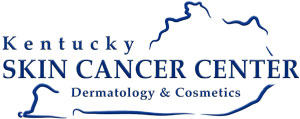The desire to minimize facial wrinkles and lines is almost universal. Of course, there’s an array of reactions to the natural aging process: Some don’t care, others just up their moisturizing game, and some go for plastic surgery.
But there’s another option that’s incredibly effective and minimally invasive — injectables.
At Kentucky Skin Cancer Center in Bowling Green and Franklin, Kentucky, Dr. Robert Skaggs offers three of the most popular injectable treatments available. Here’s what you need to know.
Why does skin wrinkle?
Before we dive into the treatments, let’s explore why you might need them in the first place.
As you age, your body changes: Your hormone production slows down, your eyesight weakens, your joints get stiff, and you get wrinkles.
Those wrinkles appear because your skin has lost volume, elasticity, and moisture. Once plump and taut, it now resembles a deflated latex balloon. The main culprit is your decreased production of collagen and elastin, the two proteins responsible for your skin’s strength and resilience. Without those two powerhouse proteins, your skin thins, dries, and shrivels, and voila — wrinkles.
The other factor at play is gravity. Without the structure of collagen acting as a scaffolding under the surface, your skin gives in to the constant tug of gravity and begins to sag.
Once age degrades it both inside and out, your skin can no longer recover from the facial expressions you make, so each smile and frown etches creases and lines that stay put even when you’re relaxed.
Top three injectables for fixing wrinkles and lines
Dr. Skaggs offers three injectable treatments to smooth out your lines and wrinkles without pain or downtime. The first two are called dermal fillers, and the third is a neuromodulator.
1. Juvéderm®
One of the top dermal fillers available, Juvéderm replaces the decreased volume under the surface of your skin. Wherever your skin looks sunken and depleted because you’ve lost collagen, the Juvéderm line of injectables adds it back by delivering a viscous substance called hyaluronic acid.
Since your body already produces hyaluronic acid, the substance is familiar and causes no adverse reactions. And hyaluronic acid loves moisture and can hold up to 1,000 times its own weight in H2O.
Although all the products in the Juvéderm line contain hyaluronic acid, they are each formulated differently to produce optimal results in specific facial features — one is best for thin lips, another for sunken cheeks, and so on.
2. Restylane®
Also formulated with hyaluronic acid, Restylane is another top-performing dermal filler. However, if you were to look at both Juvéderm and Restylane side-by-side, you’d notice a distinct difference in their textures.
Restylane is more granular compared to the smoother Juvéderm, which means it’s effective for deeper placement under your skin.
Both brands are excellent fillers that last up to 18-24 months, but each line has products that specialize in one area or another. Dr. Skaggs may use both Restylane and Juvéderm to help you achieve your aesthetic goals.
3. Botox® or Dysport®
Unlike Juvéderm and Restylane, Botox and Dysport are completely different kinds of injectables that address different kinds of wrinkles. While dermal fillers replace lost volume that caused crepey wrinkles, these neuromodulators go to the source of your dynamic wrinkles, the ones caused every time you make a facial expression.
Derived from the same toxin that causes food poisoning, Botox and Dysport effectively paralyze the tiny muscles in your face to prevent creasing. In the wrong hands, neuromodulators can leave your face motionless, but Dr. Skaggs’s medical expertise and years of experience mean you can trust your face in his hands. Soon, the creases smooth out, and the lines fade away.
Better together
Because your body eventually absorbs the hyaluronic acid from dermal fillers, and movement increases the absorption rate, neuromodulators used in conjunction with dermal fillers extend their life. And since they both target different types of wrinkles, you need them both anyway.
And there’s a bonus to getting dermal fillers and neurotoxins: Studies show that they may also stimulate your body to start producing more collagen again, which means the results are ongoing and natural.
To find out which type of injectable will tackle your types of wrinkles, schedule an appointment either online or by phone today.





